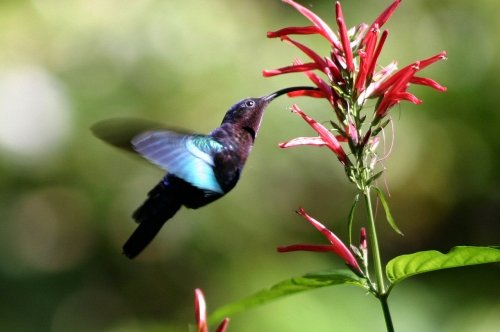Hummingbird
Hummingbird - Sciences, Education, Art, Writing, UFO - Posted: 27th Apr, 2020 - 10:16pm
Hummingbird
Hummingbird vision wired to avoid high-speed collisions
Hummingbirds are among nature's most agile fliers. They can travel faster than 50 kilometers per hour and stop on a dime to navigate through dense vegetation. Ref. Source 9k.
Image by Charles J Sharp - Own work, from Sharp Photography, sharpphotography, CC BY 3.0, Source 7q

Hummingbird (Hover)
Hummingbird UFO & Writing Art Education Sciences
Why some hummingbirds choose to balloon up before flying south
Adult ruby-throated hummingbirds choose to pack on significant weight in the four days before their long migratory flights south for the winter, new research has found. Ref. Source 8r.
Hummingbird
Hummingbirds see motion in an unexpected way
Have you ever imagined what the world must look like to hummingbirds as they zoom about at speeds of up to 60 miles per hour? According to new evidence on the way the hummingbird brain processes visual signals you can't. That's because a key area of the hummingbird's brain processes motion in a unique and unexpected way. Ref. Source 5p.
Hummingbird
The environment determines Caribbean hummingbirds' vulnerability. Hummingbirds' specialization and vulnerability are often predicted based on their physical traits. Scientists now found that this is not the case for hummingbirds on the Caribbean islands. Instead, the bird's environment is the determining factor. Source 7w.
Hummingbird
Hummingbirds show up when tropical trees fall down. When the tree fell that October in 2015, the tropical giant didn't go down alone. Hundreds of neighboring trees went with it, opening a massive 2.5-acre gap in the Panamanian rainforest. Treefalls happen all the time, but this one just happened to occur in the exact spot where a decades-long ecological study was in progress, giving researchers a rare look into tropical forest dynamics. Source 6m.
 TOPIC: Hummingbird
TOPIC: Hummingbird Hummingbirds
Hummingbirds